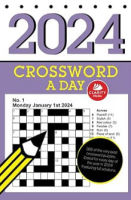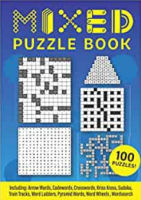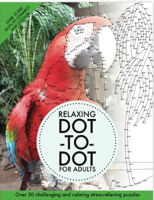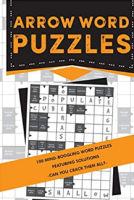How to Solve Cryptic Crosswords
Cryptic Crosswords
Cryptic crosswords can look very daunting to the uninitiated, and indeed also to the initiated! However, knowing more about what cryptic crosswords are and how they work, together with solving experience, can make them a conquerable challenge.
The first crumb of comfort is that, with the vast majority of clues, there are two different ways of arriving at the answer: there is a definition and then there is also wordplay that leads to the answer as well. It may sound from this description that they are actually easier than quick crosswords which only give you the definition, however average solving times for quick crosswords and cryptics will soon show you this is not true. Working out which part of a clue is the definition can be surprisingly tricky as writers often blend the two parts together seamlessly, and the definition itself may be looser than that you would expect to find in a quick crossword.
There are various different types of cryptic crossword clue. It helps to understand what these are and how they are structured, as spotting which type of clue style is being deployed can help you work out how to tackle it and find the answer. We’ll take a look at the most commonly seen types.
Double Definition Clues
We’ll start with the clue type that is perhaps easiest to understand, in terms of being close to the standard definitional style of a quick crossword, and that is the double definition clue. As the name suggests, with this type of clue two definitions run together. An example would be ‘check grip (6)’. Can you work out the answer? It’s ARREST. Why? Because ‘arrest’ can mean ‘check’ as in ‘stop or check progress’. And it can also mean ‘grip’ as in ‘attract the attention of’.
Anagrams
Anagram clues typically have three parts: the definition, the word or words to be anagrammised, and an anagram indicator. Some people refer to the word or words to be anagrammised as the ‘anagram fodder’ and the anagram indicator as the ‘anagrind’. With any type of cryptic clue, the definition virtually always comes either at the start of the clue or at the end of it.
Let’s look at an example:
Change later amended (5)
Here ‘change’ is the definition, ‘later’ is the anagram fodder, and ‘amended’ is the anagrind. The answer is therefore ALTER.
The anagram may involve multiple words:
Guilty dame has broken down (7)
The answer here is ASHAMED (guilty). It’s an anagram of ‘dame has’ (broken down).
The answer length always comes in particularly useful when looking for anagrams: if you see a word such as shaking, trembling, strange, confused or any other word in the clue that suggests reordering and you therefore suspect the clue contains an anagram, looking for a word or words that together match the answer length can help you find the anagram fodder.
Hidden Clues
As the name suggests, the answers to hidden clues are, well, hidden in the clue, but they may be well hidden! So whilst it sounds like these should be really easy clues, they are only easy when you realise that it is a hidden clue you are dealing with.
Hidden clues contain three parts: a definition, an indicator that this is a hidden clue, and the word or words that contain the hidden answer. Indicator words suggest you take a piece of the whole, so look for words such as some, part of, little bit and so on.
Here is an example hidden clue:
Horror contained within Pythagoras’ calculations (6)
The answer is RASCAL: ‘Horror’ is the definition (as in ‘you little horror!’), ‘contained within’ is the indicator that you are taking part of what follows, and indeed the answer is found in Pythagoras’ calculations.
As mentioned, answers can be hidden inside just one word rather than two or more words.
For instance: Disclose part of skeletons (3, 2)
The answer is ‘LET ON’ – hidden inside ‘skeletons’.
Homophones
These clues invite you to use the sense of hearing to help solve the puzzle. As usual there is a definition at the start or end of the clue, and then there is a word that you must say out loud and then find another word that sounds the same – finally there
is an indicator that hints at the spoken word such as sounds like, say or broadcast.
Let’s look at an example:
Clement extremely foolish when broadcast (5)
The definition is ‘clement’, the homophone indicator is ‘when broadcast’, so we must try and think of a word that means ‘extremely foolish’ that sounds like a word that means ‘clement’. The answer to the clue is BALMY (clement) which sounds like BARMY (extremely foolish).
The homophone indicator should always be placed next to the word or words you need to say aloud so it should be clear that you have the correct answer: in the clue above it is clear we are looking for a word that means clement, not a word that means extremely foolish, because ‘when broadcast’ is adjacent to ‘extremely foolish’, not ‘clement’.
Incidentally homophone clues can be quite contentious, as some setters will push things a little bit with their pronunciation to make two words sound the same, whilst of course regional or, indeed, national variations in pronunciation should also be taken into account as much as possible.
Odd and Even Letters
As the name suggests, these clues involve taking odd or even letters from a word in order to derive the answer. As usual, the clue contains a definition, the word or words we take odd / even letters of, and an indicator that tells us to do so. Note that sometimes the word ‘regularly’ is used to tell us that we should take regular letters (which could be either odd or even letters). Let’s look at a clue:
Vapour made from glass, oddly (3)
The definition is ‘vapour’, the indicator is ‘oddly’, and the word we plunder is ‘glass’, taking the odd letters (1st, 3rd and 5th) to get the answer which is ‘gas’.
Charades
Charades are a common type of clue that require the solver to stitch together answers to segments of the clue to find the answer. Charades include a definition as usual, and may also contain joining words (such as ‘with’, ‘after’ or ‘behind’). Here’s an example:
Following spirit leads to heaven (9)
The definition is ‘heaven’ and we must add together words that mean following (AFTER) and spirit (LIFE) to lead to the answer, thus AFTER + LIFE = AFTERLIFE.
Containers
With container clues, some letters or a word are placed within other letters or a word to create the answer. These clues have a definition as usual, and indicators of containment include words such as ‘in’, ‘held’ and ‘keeps’. Here’s an example:
God found inside restaurant pitcher (6)
The definition is ‘pitcher’. We must find a word that means ‘god’ (or the name of a god) inside a word that means ‘restaurant’. The god is Ra (Egyptian sun god) and the restaurant is café, giving us the answer
CA-RA-FE = carafe.
Reversals
The solver must reverse part of the clue in order to find part of or all of the solution with this style of cryptic clue. As usual we have a definition and an indicator that is suggestive of reversal such as ‘on reflection’ or ‘turned’. Let’s see an example:
Two cleaners returning for woollen ball (3-3)
The definition is ‘woollen ball’ and the reversal indicator is ‘returning’. A mop is a cleaner, and since we have two cleaners, we must reverse mop mop to get the answer: POMPOM.
Deletion
Here we remove a letter or letters from the start, end or possibly inside a word. Deletion clues include a definition and an indicator that suggests we lose part of a word, such as ‘almost’, ‘nearly’ or ‘dropped’. Here’s a sample clue:
Subject to choose, almost (5)
The answer is TOPIC: we combine TO and PIC(K) to get TOPIC, which is a subject. Note that this clue combines a charade with a deletion. In the world of cryptic crosswords, many clues will combine two or more types of clue style together, as evidenced here.
Abbreviations
These clues invite us to find an abbreviation, as you would expect. This clue type is extremely common, usually used in combination with another clue type such as the charade. There are many, many abbreviations in cryptic crossword land, and part of the learning curve is finding out what they are. There are lists of literally hundreds if not thousands of abbreviations, but try not to get daunted by these. The best way is to have a go at solving puzzles, and learn abbreviations through experience: you’ll find there are some that come up all the time and are worth committing to memory, whilst others are only used occasionally.
Here is an example clue:
Measuring device came across the Queen (5)
The definition is ‘measuring device’, combined with a charade of ‘came across’ (met) and the ‘Queen’ (abbreviation ER, for Elizabeth Regina), and thus the answer is METER.
Cryptic Definition
This type of clue is not particulary common; some solvers love cryptic definitions whilst others really dislike them! Unlike other clues types where there are various components (such as a definition, an anagram and an anagram indicator), with a cryptic definition the entire clue is a definition of sorts (hence a cryptic definition). These clues often end in a question mark, and if you can’t see the usual indicators used with the other clue types, then you may well be facing a cryptic definition clue. These clues often misdirect you to think of one thing, such as a particular meaning of a word, when in fact referring to something quite different.
Let’s look at a couple of cryptic definitions to see how these work:
Game for men? (5)
The question mark here helps to indicate a cryptic definition. The answer is CHESS, because chess pieces are called men. Cryptic definitions are often whimsical or playful (this one is actually quite straightforward compared to many!). Here’s another:
That which gets darker when it’s lighter? (6)
The answer is SHADOW, because the lighter / sunnier it gets, the darker your shadow becomes.
& lit.
The last of the clue types we will look at is also the rarest, and has the strangest name. Short for “and literally”, the whole clue here plays a double role, acting as both the wordplay and the definition. As such they are very hard to write, and not commonly seen. An & lit clue typically includes some sort of wordplay as per one of the clue types above, but instead of there being a separate definition at the start or end of the clue, once you’ve solved the wordplay you should read the whole definition and that should lead you to the same answer. Hopefully an example will make this a little clearer:
Like devils on the inside? (4)
The answer here is EVIL. This looks like a standard hidden clue: look inside the word devils, and we find EVIL. But wait, there is no extra component to the clue that is the definition as should be the case with a hidden clue. Now we realise that ‘Like devils on the inside?’ taken as a whole also gives the answer EVIL, since a defining feature of being a devil is being evil (presumably outside and in!)
So, if the clue were ‘Wicked, like devils on the inside’ this would be a standard hidden clue, since we now have a definition (wicked) and the wordplay (dEVILs). But because ‘Like devils on the inside?’ has the same words acting as both the wordplay and the definition, it is an & lit clue.
We hope you found this introduction to cryptic crosswords and the types of clues you might encounter in a puzzle useful.
If you'd now like to have a go at solving cryptic crosswords, you might like the bitesize crosswords puzzles played on small 6x6 grids in this book linked to below - this will introduce you to a range of different clue types, and with all the answers at the back together with explanations, whenever you get stuck take a look at the solution and learn how it is put together. As you work through the book hopefully you'll be able to solve more and more of the puzzles without having to look up answers and then be ready to tackle full-size puzzles which work in exactly the same way but just have a lot more clues per puzzle!
The i book of Five-Clue Cryptic Crosswords
Date written: 30 Oct 2021
Category: crosswords | Keywords: cryptic crosswords | solving tips
Puzzle Videos: Learn to Solve
General Knowledge Quiz 1
Welcome to our first general knowledge quiz! This quiz contains a range of 20 general knowledge questions for you try and pit your wits against - how close to a perfect score can you get?
Read about other Puzzles
- Making Wordsearch Difficult
- How to Fill a Sudoku Grid
- Hard Codeword Puzzles
- Cracking Killer Sudoku
- Creating Irregular Sudoku Puzzles
Comment on this blog post
If you would like to comment on this post, please enter your comments below; all fields are mandatory. Posts are moderated before display.
Back to World of Puzzles



